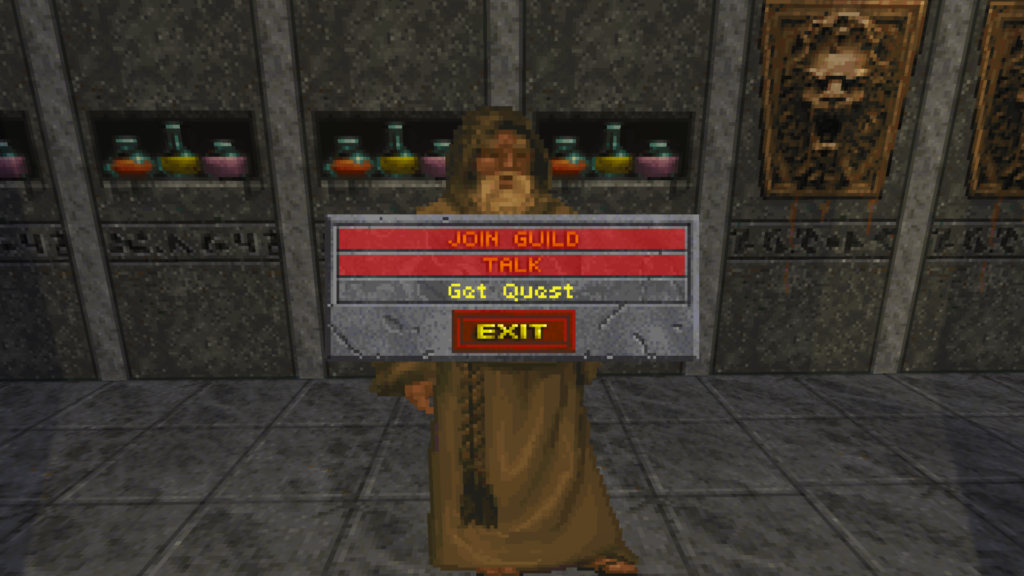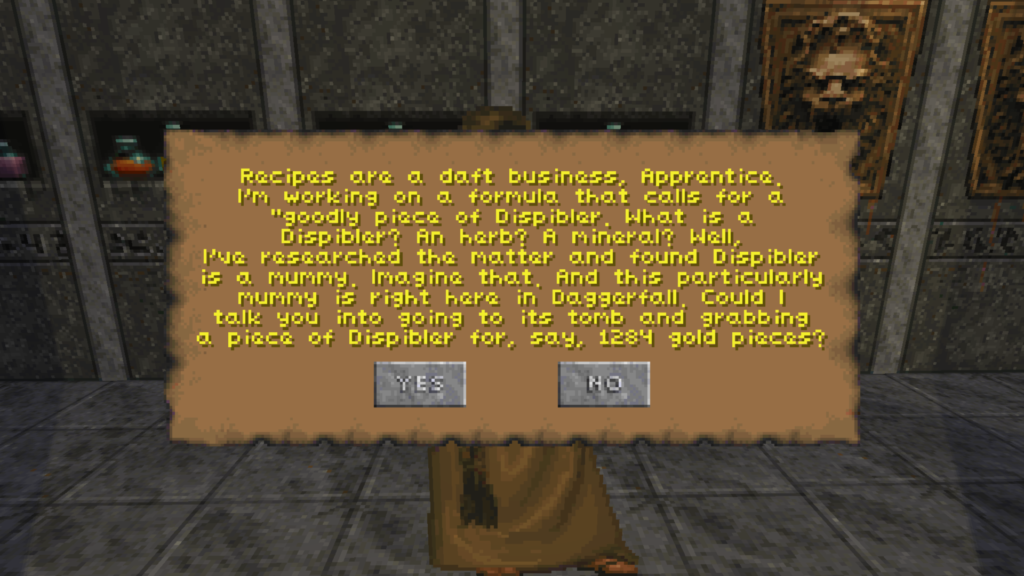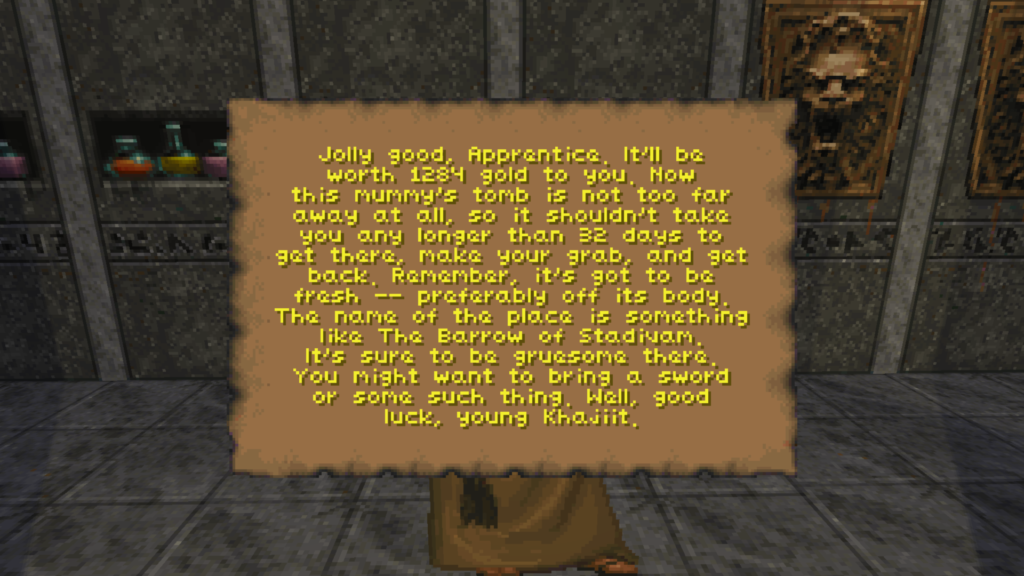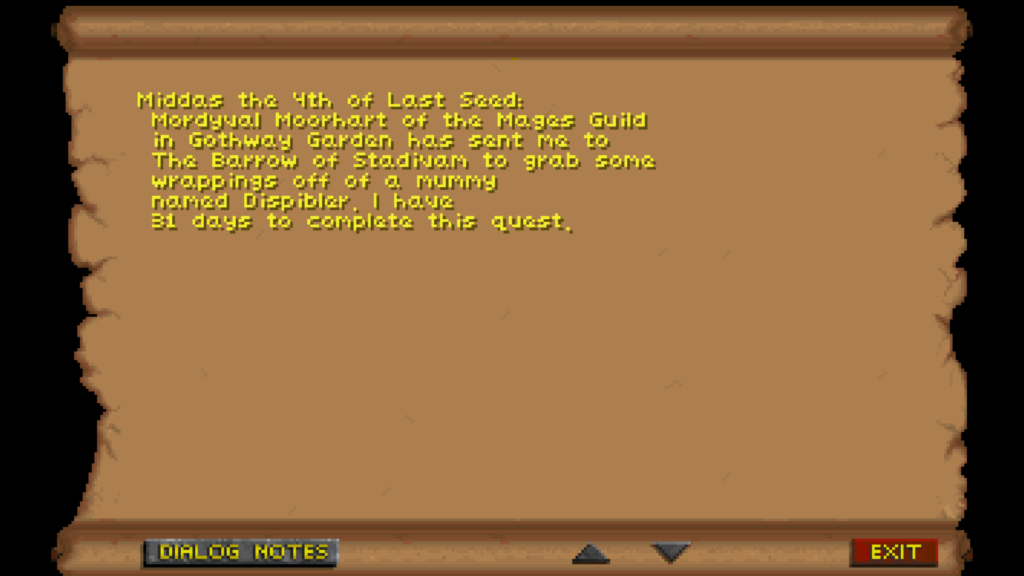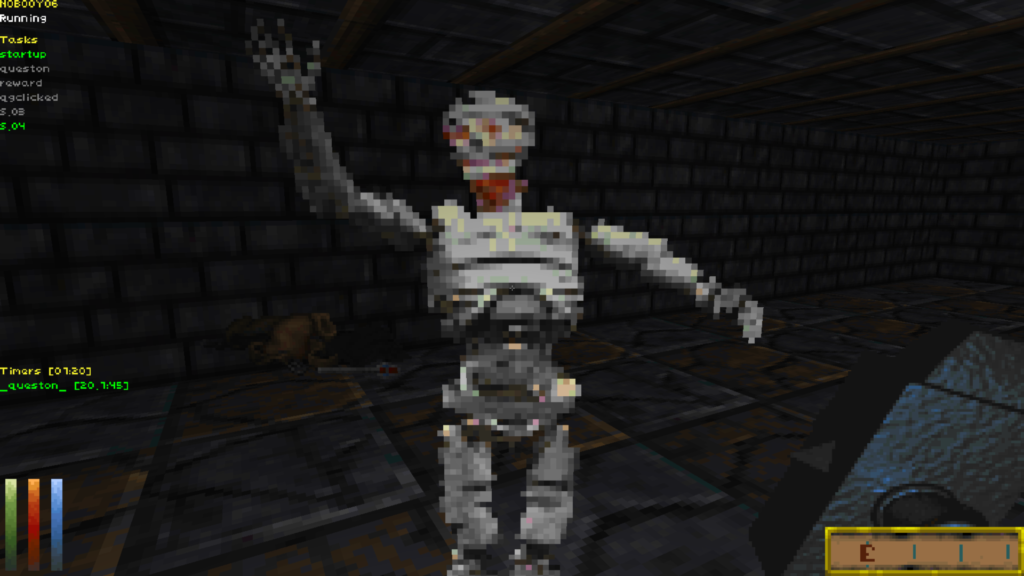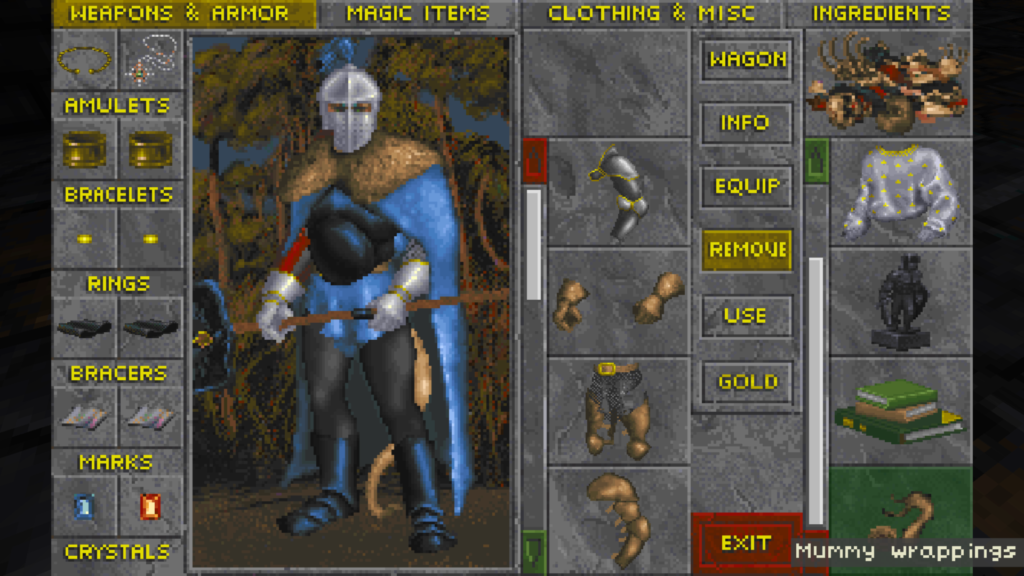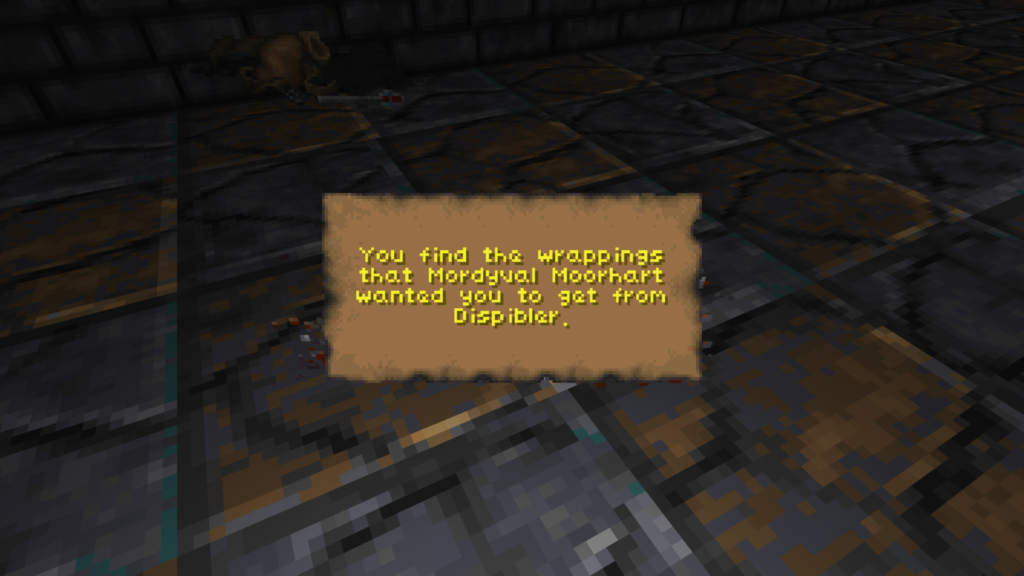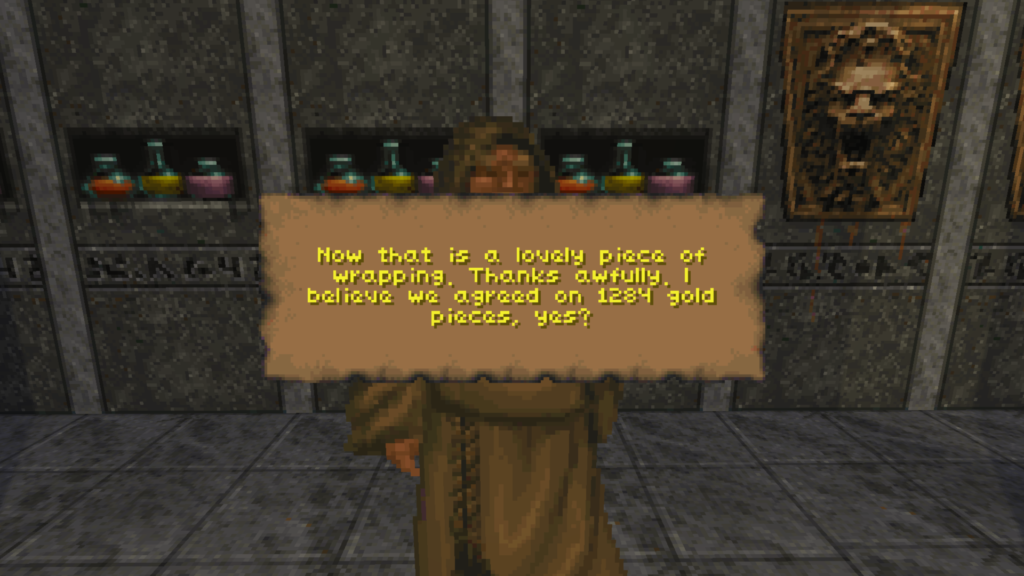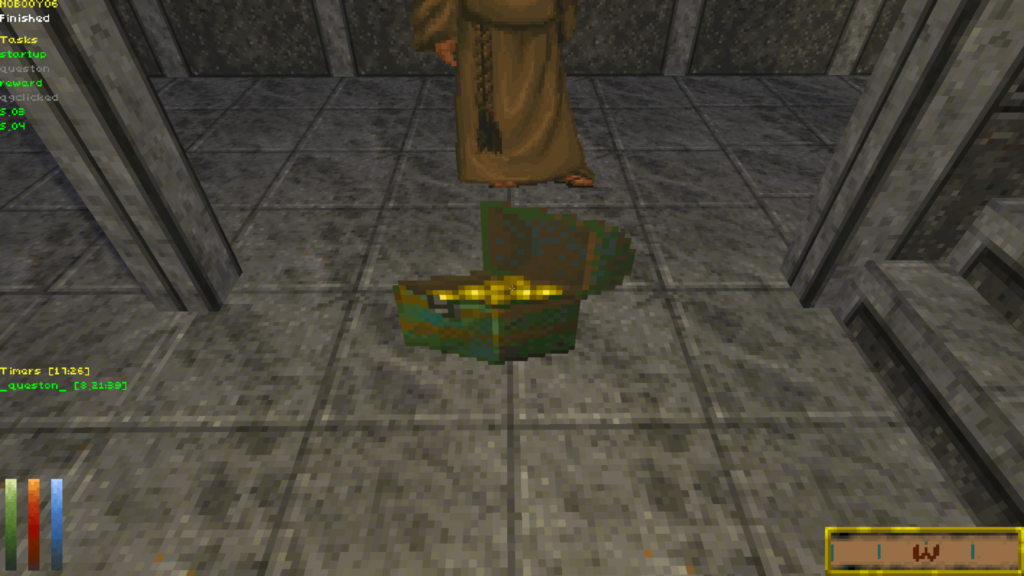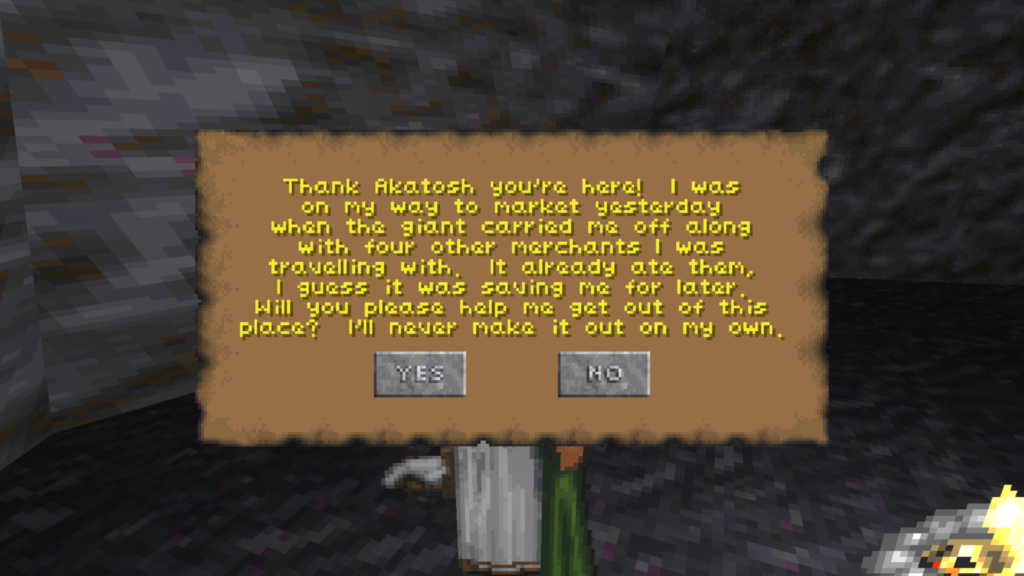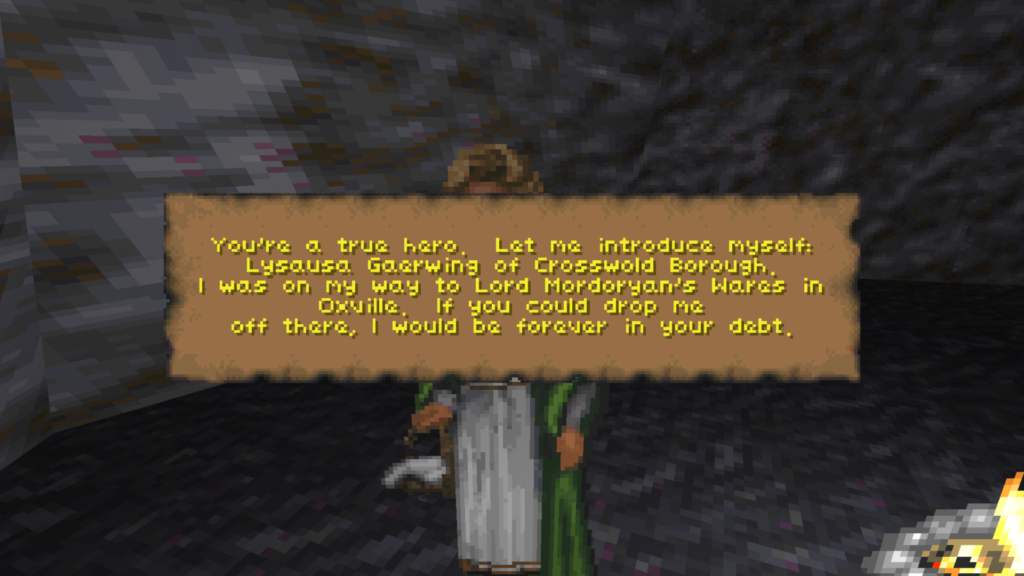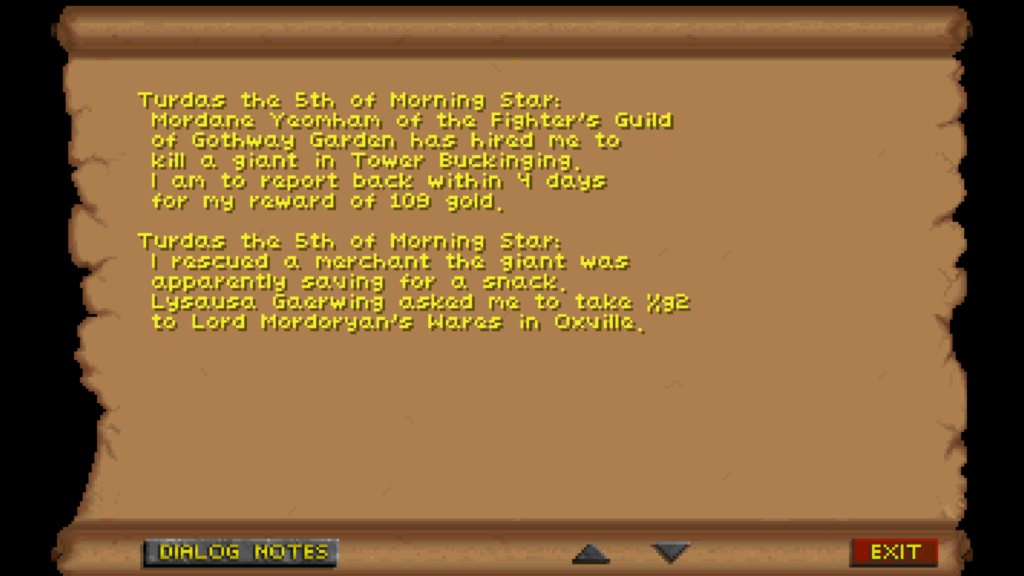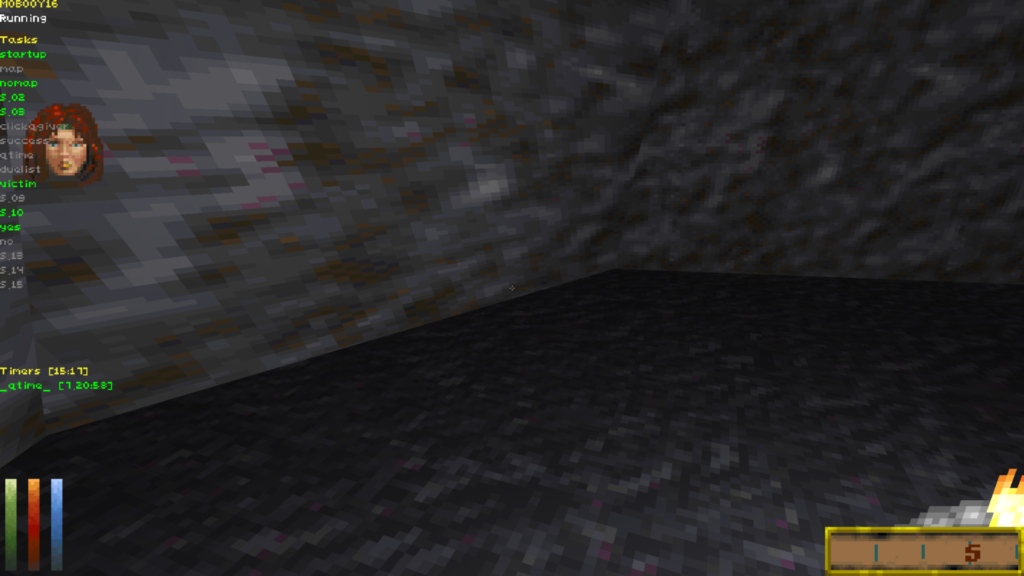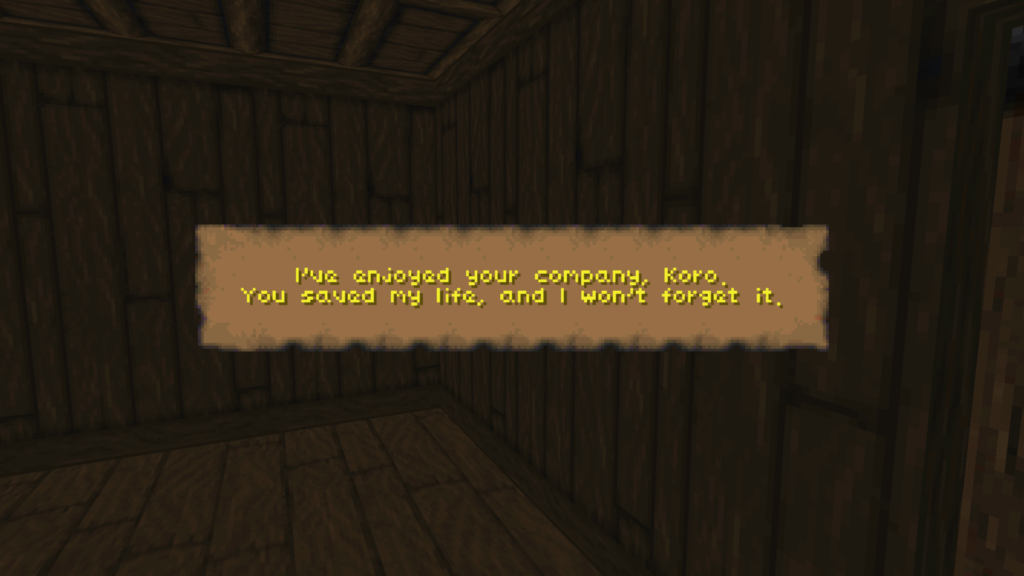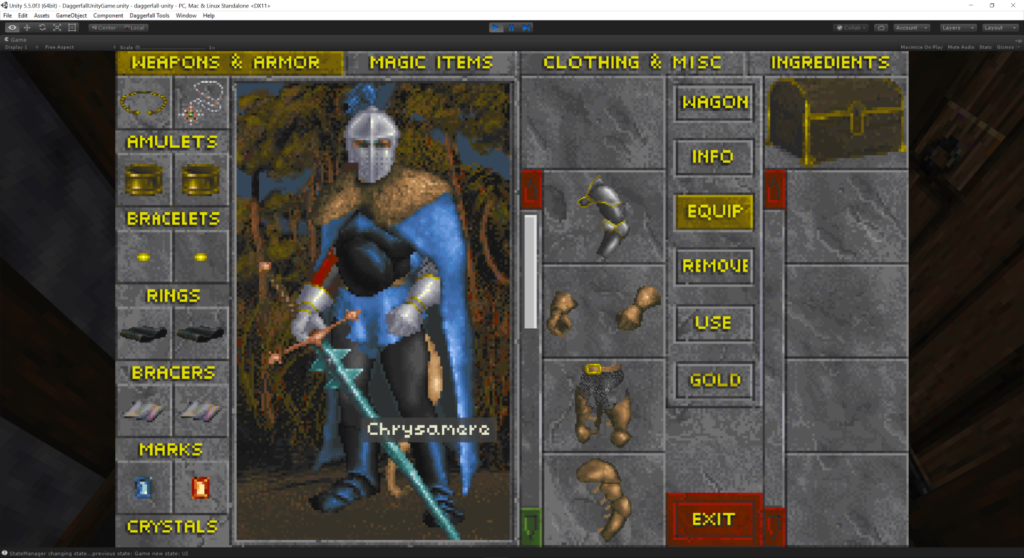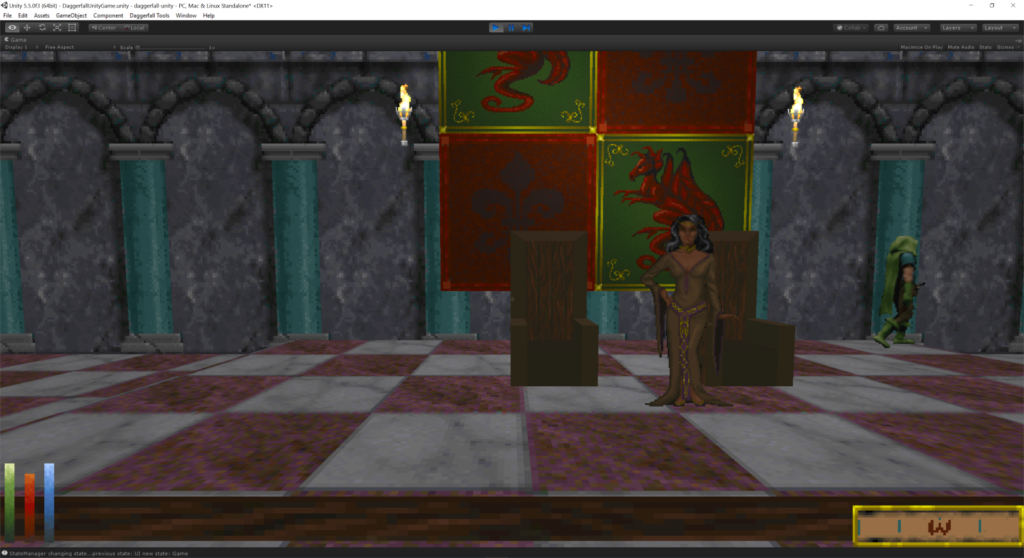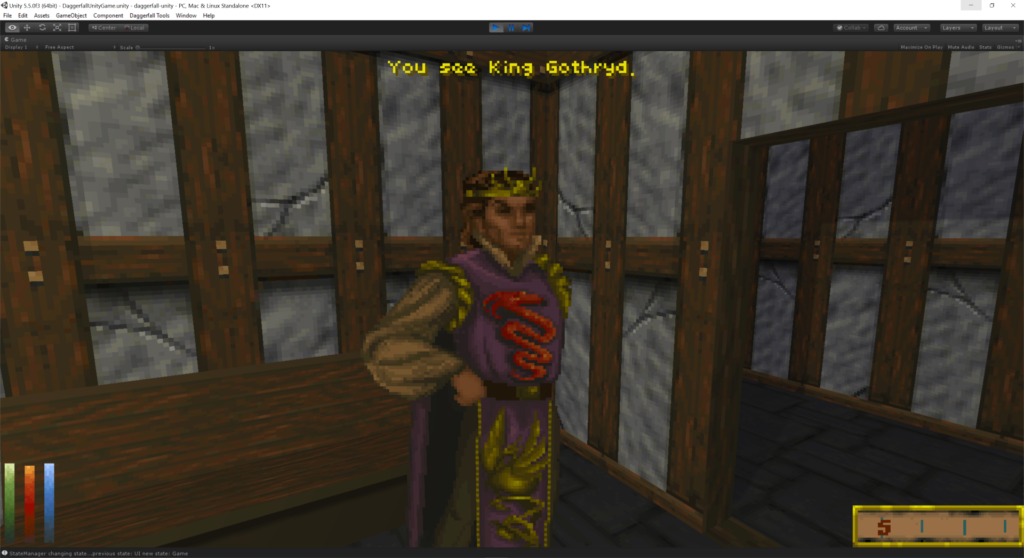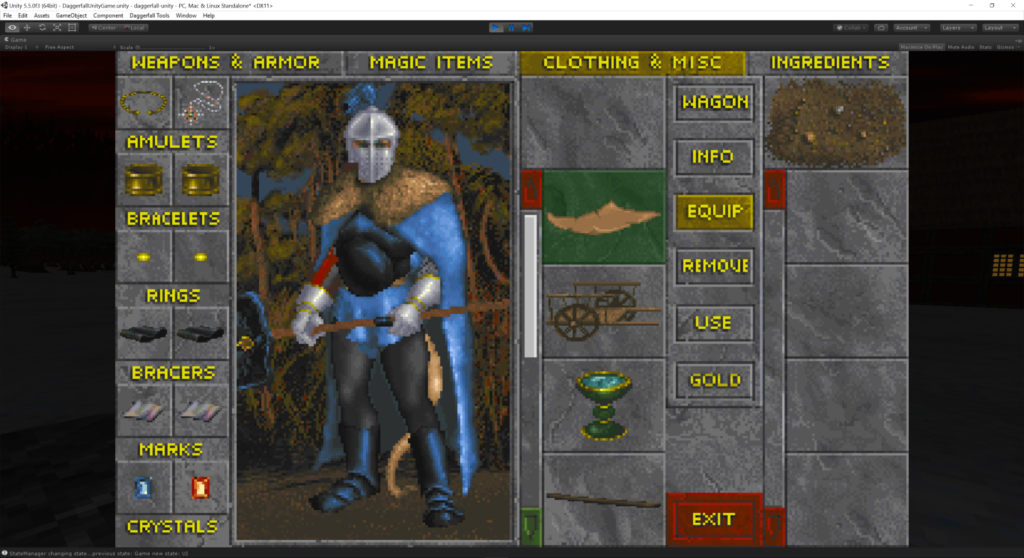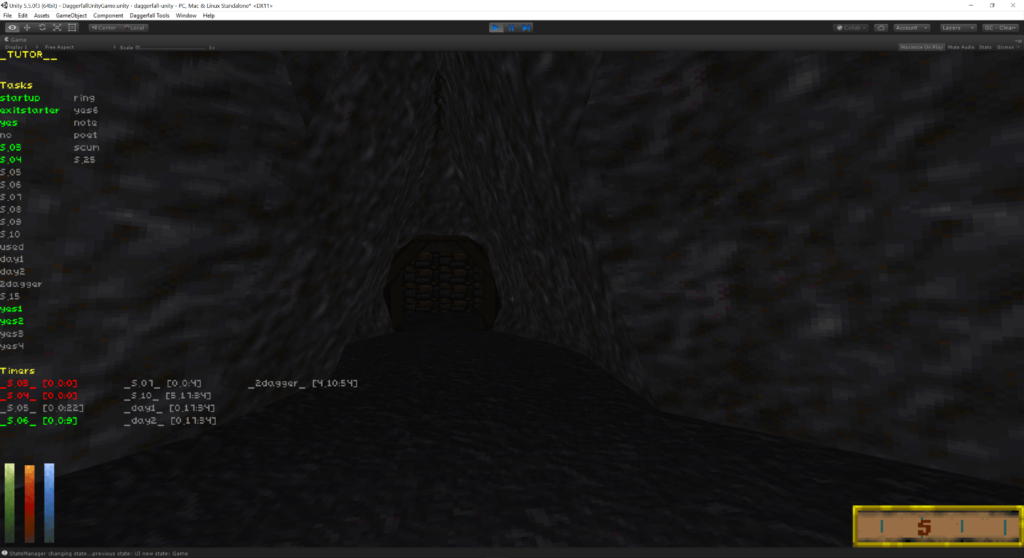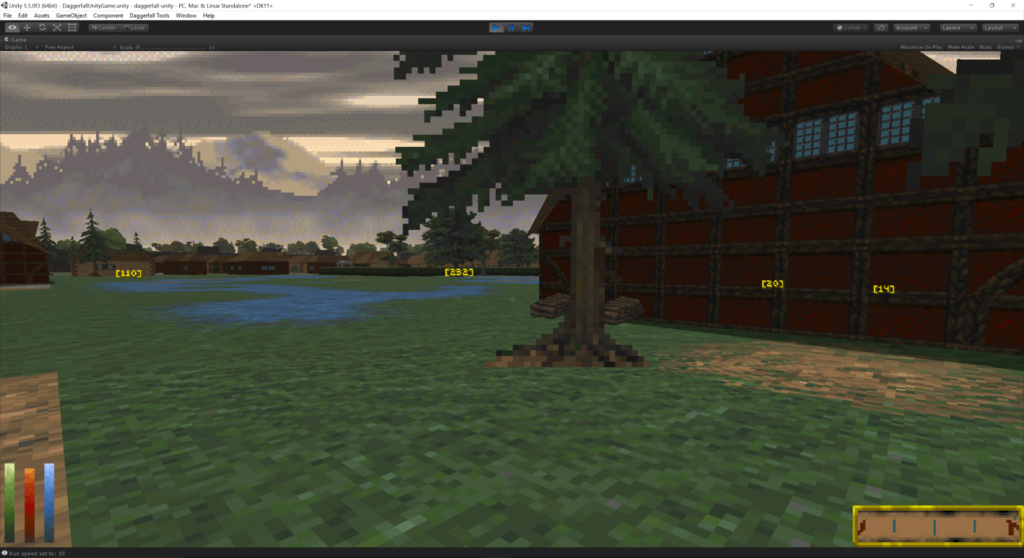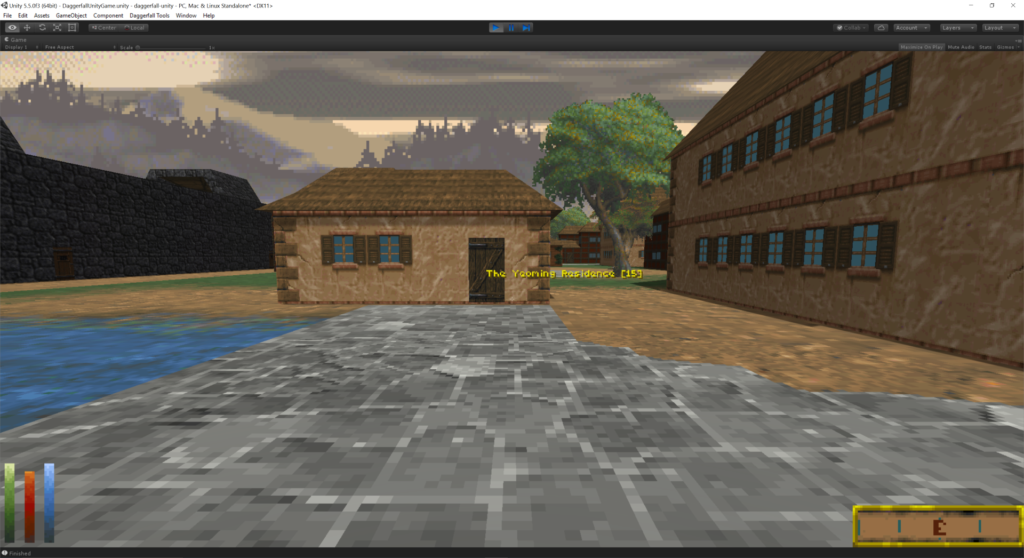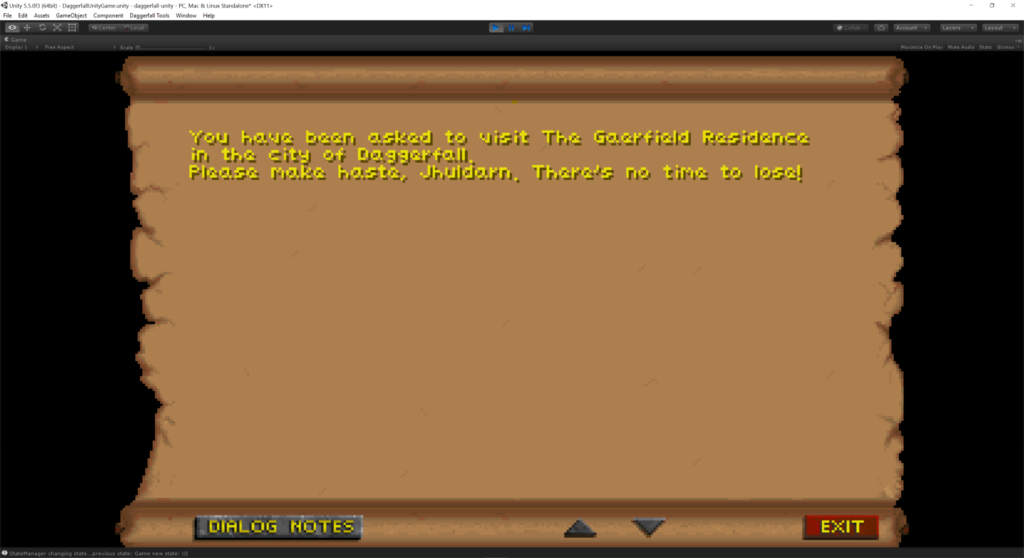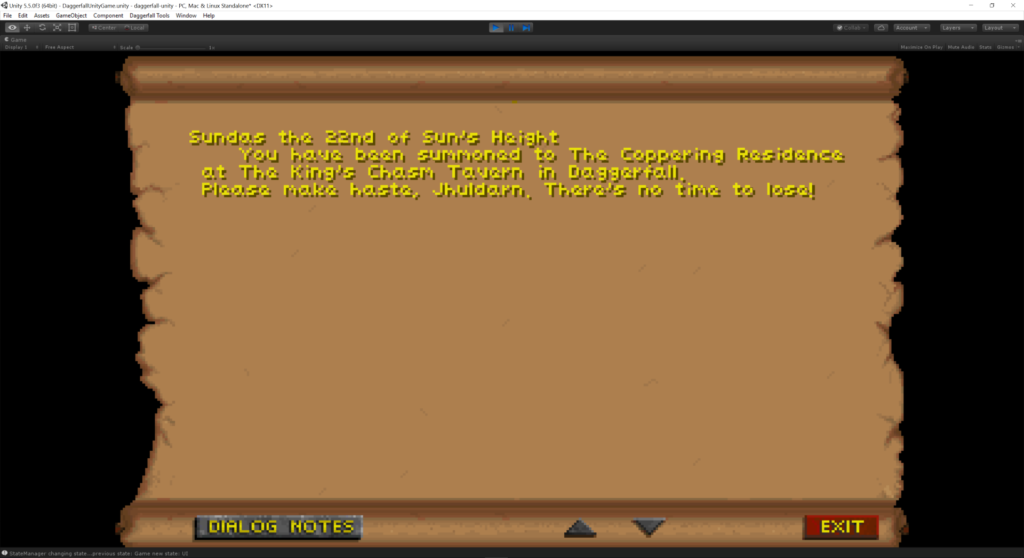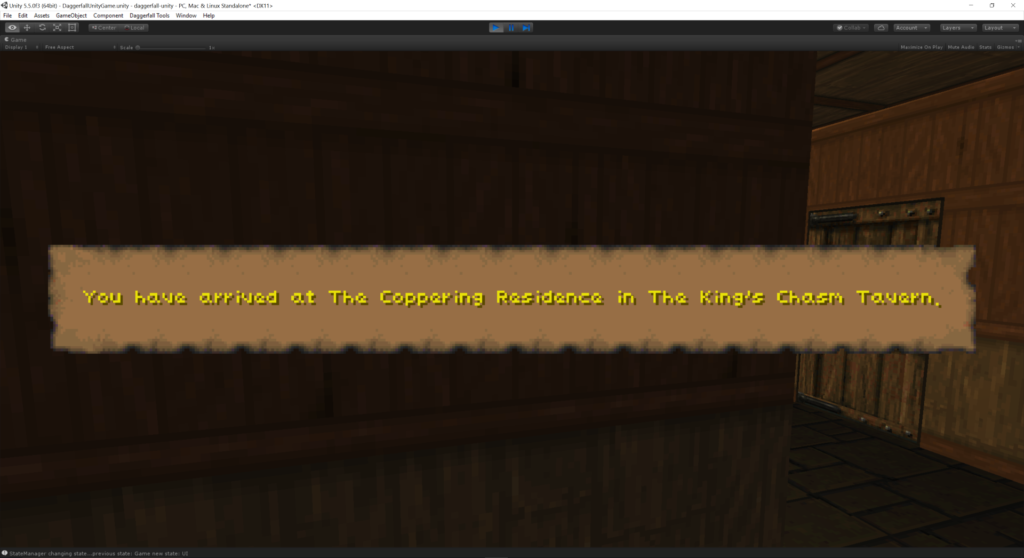For the first time yesterday, I was able to run a full quest in Daggerfall Unity from start to finish, and I’m very happy to say that a sizeable chunk of the quest system is now implemented. Following is another quick visual diary on what I’ve been working on lately. Where possible, I’ll share some information on what the quest system is doing in the background. There’s also a new video at the end.
Guild Quests
I have partially implemented guild quests with their usual service providers. Visit the quest-giver NPC in any Fighters or Mages Guild across Illiac Bay to receive a quest from a curated pool that is “mostly working” in Daggerfall Unity. This system helps me set the scope for testers, and introduce new quests over time as more of the quest system is built. Let’s take a look at this in action by following a quest from start to finish.
If you have a sharp eye for Daggerfall quests, or have ever written one yourself, you’ll notice a lot is happening in the screenshots above:
- Quest-giver NPC is identified by faction ID and the guild service window shows “Get Quest” as it should for that NPC.
- The quest offer process is in place for you to accept or refuse job offered.
- Many text macros are expanded automatically – such as random monster name, target location, player’s race, current region, and so on.
- Reward is being randomly generated based on quest script.
- Travel time is calculated from world using same logic as travel map, ensuring player has enough time to travel there, find the item, and return back.
- The quest log information is generated and stored in the journal with current date, return location, quest-giver NPC, target monster, and how long you have to complete quest.
- The quest-giver (Mordyval Moorhart) has also been tagged as the Questor NPC for this job. The quest system will keep track of your clicks on this person to know when you’ve returned with the wrappings.
If you travel to the named dungeon and explore it thoroughly, you will eventually find the mummy who is the target of this quest. If you don’t want to search you can use the ‘tele2qspawn’ and ‘tele2qitem’ console commands to teleport directly to the target spawn or item markers in dungeon. However you find it, kill the mummy and the target quest item is placed in its inventory for you to loot along with other randomly generated treasure.
Here are some of the things the quest system is doing under the hood in the above screenshots:
- Tracking when player visits target dungeon and injecting the mummy into world.
- Capturing script events like “injured foe” and “killed foe”. In this particular the quest, the mummy wrappings are placed on the monster when you injure it.
- Tracking quest items, setting their background green, and displaying scripted text after picking up the mummy wrappings.
Now it’s time to return to Mordyval Moorhart for our reward.
In this step, the following stuff happens in the background:
- Quest script detects you have clicked on the Questor NPC with the target item.
- The QuestCompleted text is shown for a successful outing.
- A loot container opens with your agreed-upon reward.
In classic Daggerfall, if you accidentally close the loot window without getting your reward that item is lost. I’ve made a small change where the reward is placed into a dropped loot container at your feet if you forget to collect it. This at least gives you a second chance to pickup your loot.
With all of the above working, this closes the loop on the quest process for a whole bunch of quests. It’s not just mummy wrappings, a lot of quests involving item hunts and killing monsters all operate inside this same framework. Where things fall down right now is with some of the special script actions that add flavour and complexity to quests. These remaining quest actions and conditions will be built out over time until quest system is at 100%.
Escort Quests
Sometimes a quest will ask you to take an NPC somewhere, such as rescuing the below person from a giant slain as part of a Fighters Guild quest. It seems the giant had been keeping this person for a snack.
A lot is happening in the above side-quest:
- The quest script selects at random from a victim NPC, a map reward, or no map and no victim. In this case, the victim NPC was selected.
- The random NPC Lysausa Gaerwing and her home town of Crosswold Borough are generated, giving her a bit of a backstory.
- According the quest log, she wants to be delivered to Lord Mordoryan’s Wares, a shop in Oxville. Note the %g2 pronoun macro isn’t working yet. This is on my todo list.
- When accepting the escort, a portrait (which usually does not resemble NPC flat in world) is added to your HUD to show this person is journeying with you.
- The quest system tracks when player enters target building, displays the scripted popup, and removes NPC from your HUD.
Artifacts
A smaller task than above, but still necessary for the quest system is the ability to spawn artifact items. These special items are created by merging two sets of template data together to form one very powerful item with a larger than usual number of enchantments. While magic system isn’t in the game yet, certain groundwork still needs to be implemented. Because I’m looking at spells and effects in the update chain immediately after quests, now is a good time to start thinking about this stuff. Artifacts are still at a very early stage, and I might not return to them for a while.
The character above is holding Chrysamere from a quest script intended only to test these items can be generated by quest system. A big thanks to all the people who sent me their saves so I could test artifact import and creation. I still have some bugs to fix, but I’ve made a good start on this.
Conclusion
The quest system is doing great. It’s still a ways from being finished, but all the hard problems have been solved and now I’m just building out support for remaining actions and conditions, and fixing bugs along the way. The next items on my list are multi-spawn foes (e.g. kill 6 rats in a house) and more work on text support (like the %g family of pronoun macros). There’s bound to be a few more articles to go before I can call quests complete.
If all goes well, I should have the first real test build with the quest system in current state available in 2-3 weeks. This will have the Fighters and Mages Guild quest system in place for testers to run through available quests and help me find bugs. You’ll also be able to use ‘startquest’ console command to launch whatever quest you wish, even quests you write yourself, but things might not work properly if you go too far off grid for now. I’ll post more about the test build once it’s ready, including any limitations in the build at the time.
Thank you for reading! If you would rather watch quests in action, following is a pure gameplay video of Daggerfall Unity, except I’m using the console cheats to teleport to objectives in dungeons for the sake of brevity.
For more frequent updates on Daggerfall Unity, follow me on Twitter @gav_clayton.
